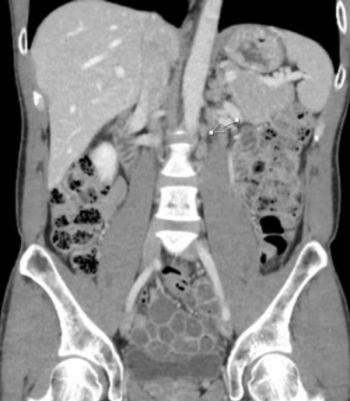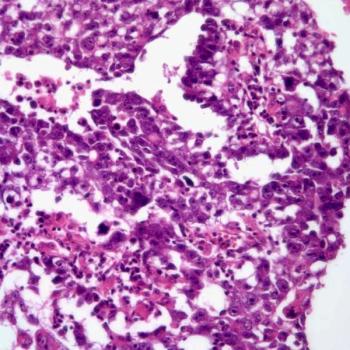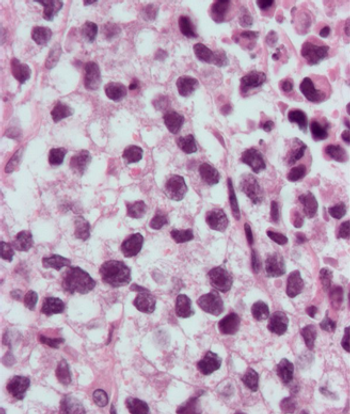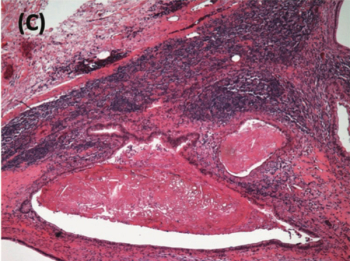
Oncology NEWS International
- Oncology NEWS International Vol 17 No 4
- Volume 17
- Issue 4
A surgeon brings cancer care to Harlem
Dr. Harold Freeman is a soft-spoken man with strong-held opinions. He grew up in our nation’s capital at a time when restroom doors and drinking fountains radiated the ugly messages of segregation, while African-American churches and schools provided a strong cohesive community. As a youth, he rose above the racial barriers of the time, ultimately forging his anger at racial disparities into his life’s work.
Dr. Harold Freeman is a soft-spoken man with strong-held opinions. He grew up in our nation’s capital at a time when restroom doors and drinking fountains radiated the ugly messages of segregation, while African-American churches and schools provided a strong cohesive community. As a youth, he rose above the racial barriers of the time, ultimately forging his anger at racial disparities into his life’s work.
But the seed for that life’s work was actually planted almost 200 years ago by a man who defiantly invented the family name of Freeman-a slave named Walter, who was purchased in 1829 for $388.
Harold P. Freeman, MD, recently invited ONI to speak with him at the Ralph Lauren Center for Cancer Care and Prevention in Harlem, where he is president and founder. “My father was a lawyer, my mother was a teacher. We didn’t have a lot of resources, but it was a tight family that stressed education,” said Dr. Freeman, sitting at an oval table in the Ralph Lauren Center’s conference room. Pictures on the walls capture the kaleidoscopic personality of Harlem-a poor but storied neighborhood with more than 400 churches.
The price of freedom
But before walking down the road from segregated Washington, DC, to his pioneering accomplishments in oncology, Dr. Freeman wanted to revisit the enigma of the Honorable George E. Badger. He said that he knew his great-great grandfather had been a slave in Raleigh, North Carolina, but he felt compelled to learn more about his namesake’s story.
“So I went to the University of North Carolina at Chapel Hill to search the archives. My great-great grandfather’s slavemaster was a man known as the Honorable George E. Badger,” Dr. Freeman said. Badger, a plantation owner, was a well-known judge in North Carolina who served as Secretary of the Navy and later as a US Senator for 11 years.
“I held my great-great grandfather’s bill of sale and read that his wife, my great-great grandmother, Eliza, was given to the Honorable George Badger as a wedding gift by his father-in-law,” Dr. Freeman said. He paused. “I couldn’t help but wonder how a man could be both honorable and a slavemaster.”
Of course, the real “honorable man” in this story is Dr. Freeman’s progenitor, Walter Freeman. Working part-time as a carpenter off the plantation, Walter saved the impossible-sounding sum of $3,000 and purchased his own freedom from Badger. What better name for himself and future generations than Freeman. Relentlessly, Walter Freeman kept his shoulder to the wheel, purchasing his wife and children from Badger, his former slavemaster.
“One of my great-great grandfather’s sons graduated from Harvard Dental School in 1869, becoming the country’s first African-American dentist,” Dr. Freeman said.
Drawn to oncology
Dr. Freeman came out of a setting in which he learned about social injustice, on many deep levels. He graduated from Catholic University of America in Washington, DC, where he received the Harris Award for “Outstanding Scholar, Gentlemen, and Athlete.” After earning his medical degree from Howard University Medical School, he completed a residency in general surgery at Freedmen’s Hospital, which is now Howard University Hospital.
And the next step? A smile came to his face as he revealed his underlying desire at that stage in his life: “What I really wanted to do was play tennis. At the time I was good enough to compete in the national championships held in Forest Hills, New York.”
To that end, Dr. Freeman toyed with the idea of practicing dermatology or psychiatry, disciplines that would mesh better with his budding tennis career. So what pulled him to oncology, an arcane field just beginning to take root?
There were two deciding factors: First, Dr. Freeman’s drive to reach the highest possible technical excellence as a surgeon; cancer offered that challenge.
The second factor was more personal; his father died of testicular cancer when Dr. Freeman was 13. “Cancer had a certain underlying meanness to it; it took my father away,” he said.
Deciding on oncology, he spent 3 invaluable years at Memorial Sloan-Kettering Cancer Center as a senior surgical oncology resident.
The women of Harlem
Although Dr. Freeman’s career is marked by leadership positions in NCI, the American Cancer Society, and the President’s Cancer Panel, to name but a few, it was among the poor where he would apply the full brunt of his medical skill and social passions.
“I came to Harlem in 1967, and I’ve been here ever since,” he said.
Surgeons are results driven; they open, remove the pathology, and close. But what Dr. Freeman found at Harlem Hospital disturbed his surgeon’s ethos.
“Most of the cancer patients coming into Harlem Hospital had advanced disease. Women walked in with ulcerated breasts. Surgery offered no answer for these patients,” he said.
Dr. Freeman’s training disposed him to think more about individual surgical cases than lofty abstractions, but the young doctor was painfully aware that the healthcare crisis he was seeing had two unifying components.
“All the patients were poor, and they were black. To help the community, I needed to disentangle the meaning of race and poverty as it related to healthcare outcomes,” he said.
Black women with breast lumps went to the emergency room where they were turned away. Most had no personal physician and no means to pay, as well as a terrible fear of cancer.
“The diagnosis of cancer was more painful than the lump, because they had nowhere to go for help,” Dr. Freeman said. He saw improving access to screening as one way to help these women by catching cancer when it is still treatable and the woman still has options.
One Saturday morning, Dr. Freeman set up the community’s first breast cancer screening program at Harlem Hospital. “I didn’t have the authority to do it, I just did,” he said.
He skirted the legal issues, the naysayers, and worked with the city administration, showing them that what he was doing not only saved lives, it saved money.
“I opened the clinic in 1979, and it has been open every Saturday since, and not one woman has been turned away, regardless of her ability to pay,” Dr. Freeman said.
Turning to research
As Director of Surgery at Harlem Hospital, Dr. Freeman now had the opportunity to research the healthcare problems he saw day to day. With hard work came further promotions, but, more important, recognition, providing Dr. Freeman the resources needed to exploit his experiential data in Harlem on the national stage.
His efforts culminated in 1988 when, as president of the American Cancer Society, Dr. Freeman initiated a seminal project called Cancer in the Socioeconomically Disadvantaged.
“We found that poor Americans, regardless of race, have a 5-year cancer survival rate 10% to 15% lower than other Americans. It was important because it made us look at the universal meaning of being poor, irrespective of race,” Dr. Freeman said. It also showed the fragile nature of being poor: without access to healthcare, the poor disappear into themselves.
Dr. Freeman knew that Harlem wasn’t an exception; the same dismal medical outcomes he saw were replicated throughout the nation’s inner cities, but statistics still obscured the subtle relationship of race and health in our society.
Almost 20 years ago, Dr. Freeman audaciously compared slices of America to a third-world country.
“In 1990, I co-authored a paper in the New England Journal of Medicine, looking at mortality rates in the Central Harlem health district in which 96% of the population was black and 41% were below the national poverty level,” he said. His co-author, Colin McCord, MD, had worked overseas and had access to actuarial data from Bangladesh. They compared mortality rates from Harlem and Bangladesh.
The findings were startling: Black men in Harlem were less likely to reach the age of 65 than men in Bangladesh. “So all you had to do was take a trip uptown, and you were in the third world,” he said.
After the interview, Dr. Freeman gave ONI a tour of the Ralph Lauren Cancer Center. The center is modern and vibrant, and, like its director, it has a palpable air of purpose. He described his first meeting with Ralph Lauren, the clothing designer who turned his fashion and entrepreneurial skills into a business empire.
“I explained what I needed to build the center. Mr. Lauren was quiet; he asked a few questions. He seemed very sincere, and as it turned out, he was very serious,” Dr. Freeman said. He reiterated with a quiet intensity: “No one is ever turned away from the Ralph Lauren Cancer Center for lack of money or insurance.”
As he walked the halls, smiling and greeting the passing nurses, Dr. Freeman discussed the Patient Navigator program, another of his firsts in the battle to break down barriers to cancer care.
“Just as a sailing ship needs a navigator to avoid the rocks, patients, especially in underserved communities, need navigation to get all the way through the complex medical system as quickly as possible,” he said. “The Navigator is a person of the community who knows the system and is highly wired to help the patient through it. We put Patient Navigators in place in Harlem Hospital in 1990. It works, and the system is being replicated around the country.”
With a grant from Amgen, he established the Harold P. Freeman Patient Navigation Institute one block away from the Ralph Lauren Cancer Center. “We’re training Patient Navigators from around the country there,” he said.
After only a brief visit, one is struck by Dr. Freeman’s commitment to bring logical solutions to the problems of social injustice. Like his great-great grandfather Walter Freeman, he puts his shoulder to the wheel, day after day. Asked if he still plays tennis, Dr. Freeman said with a smile, “Oh yeah, I try to remember how to stroke the ball, twice a week.”
Dr. Harold Freeman talked with ONI about his life, his heritage, and the career path that led to his life's in Harlem (photograph 1). He met with reporter Ronald Piana In a conference room the Ralph Lauren Center for Cancer Care Prevention where the artwork captures spirit of Harlem (photograph 2). The conversation continued as he and Mr. Piana walked halls of the Ralph Lauren Center (photograph 3). The Patient Navigation Institute bears name of its founder (photograph 4).
Articles in this issue
almost 18 years ago
Proton therapy training offeredalmost 18 years ago
Editor of Blood reviews a very bloody moviealmost 18 years ago
Artists take note: Oncology on Canvas accepting entriesalmost 18 years ago
PET affects treatment in over one-third of cancer casesalmost 18 years ago
Expanded use of Axxent approvedalmost 18 years ago
Gardasil supplemental application gets priority review designationalmost 18 years ago
Optical tomo/US monitors adjuvant chemo responsealmost 18 years ago
GIST patients resistant to imatinib/sunitinib respond to sorafenibalmost 18 years ago
Sunitinib plus a taxane active in advanced breast canceralmost 18 years ago
Stanford V yields excellent outcomes in bulky, advanced HLNewsletter
Stay up to date on recent advances in the multidisciplinary approach to cancer.































































































